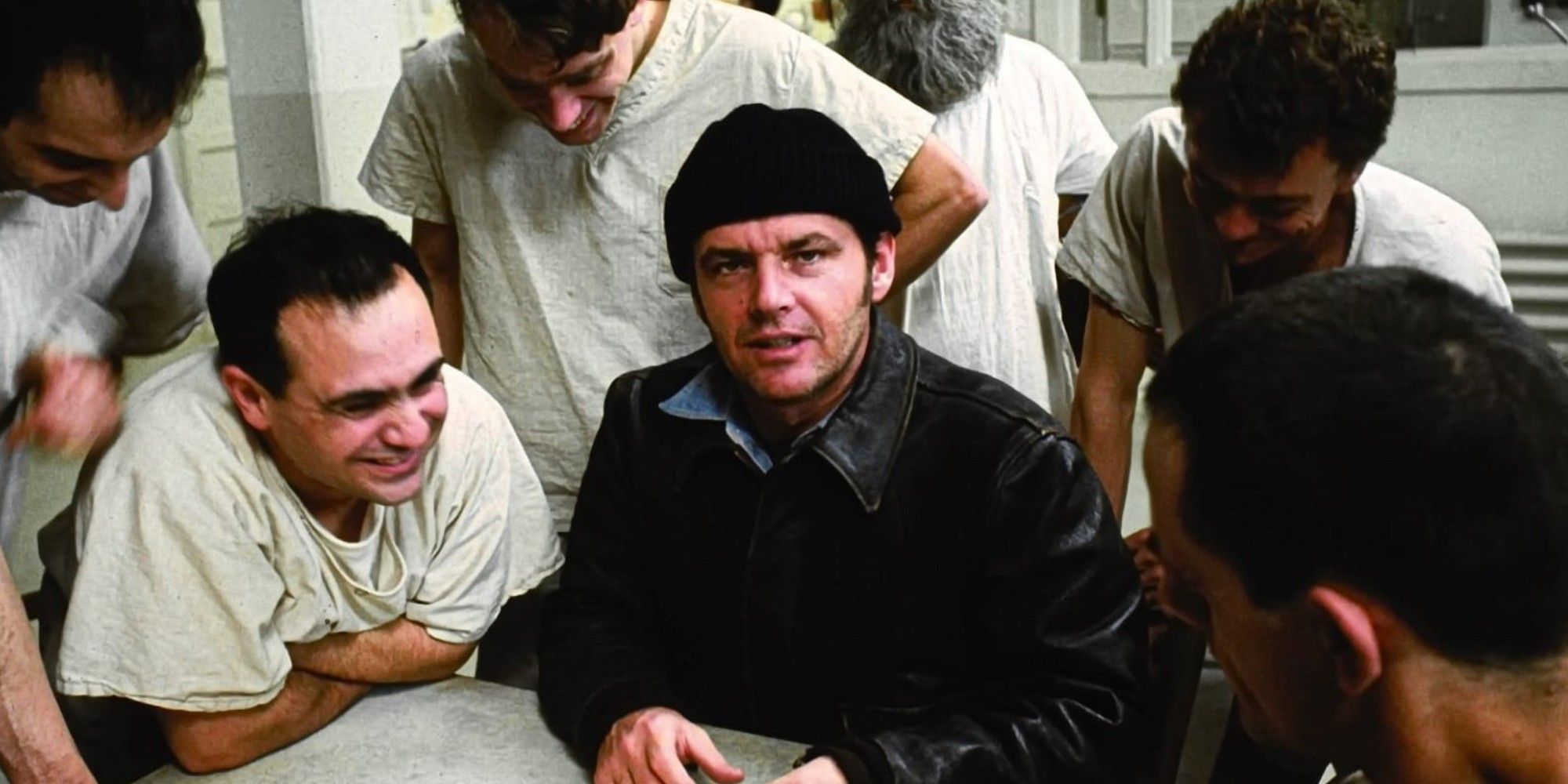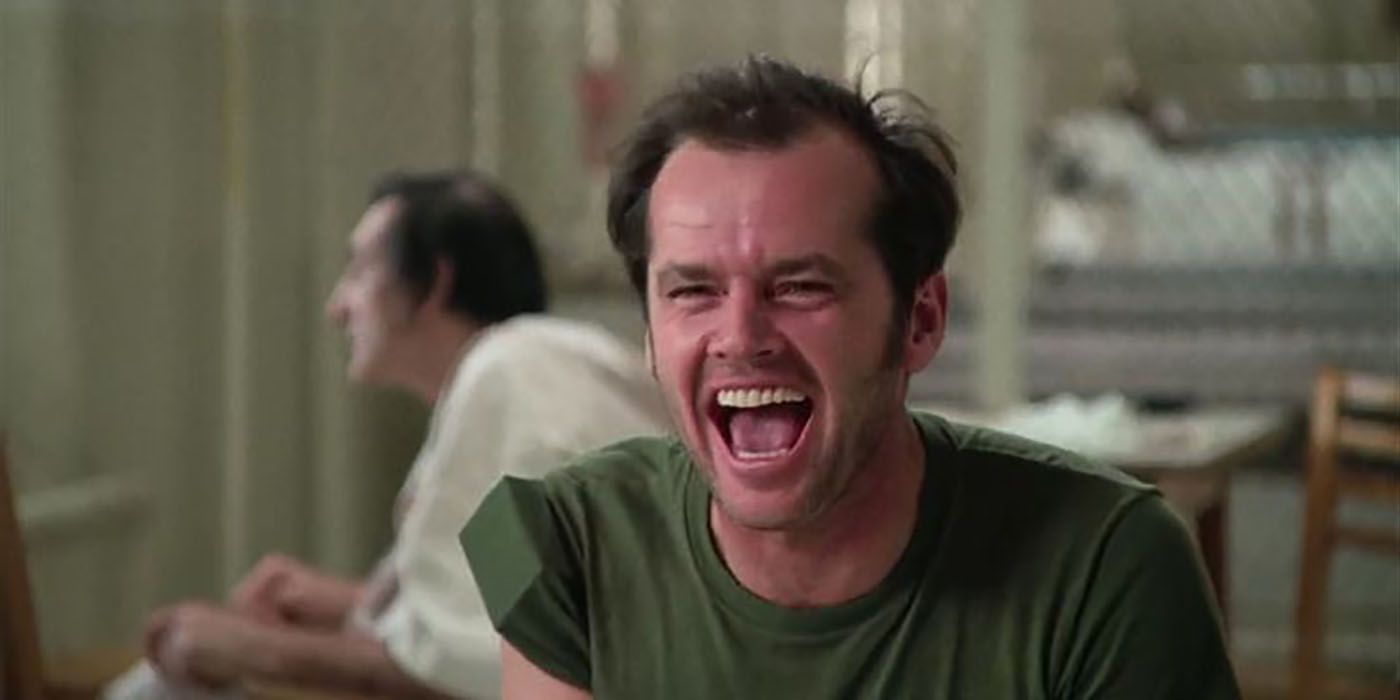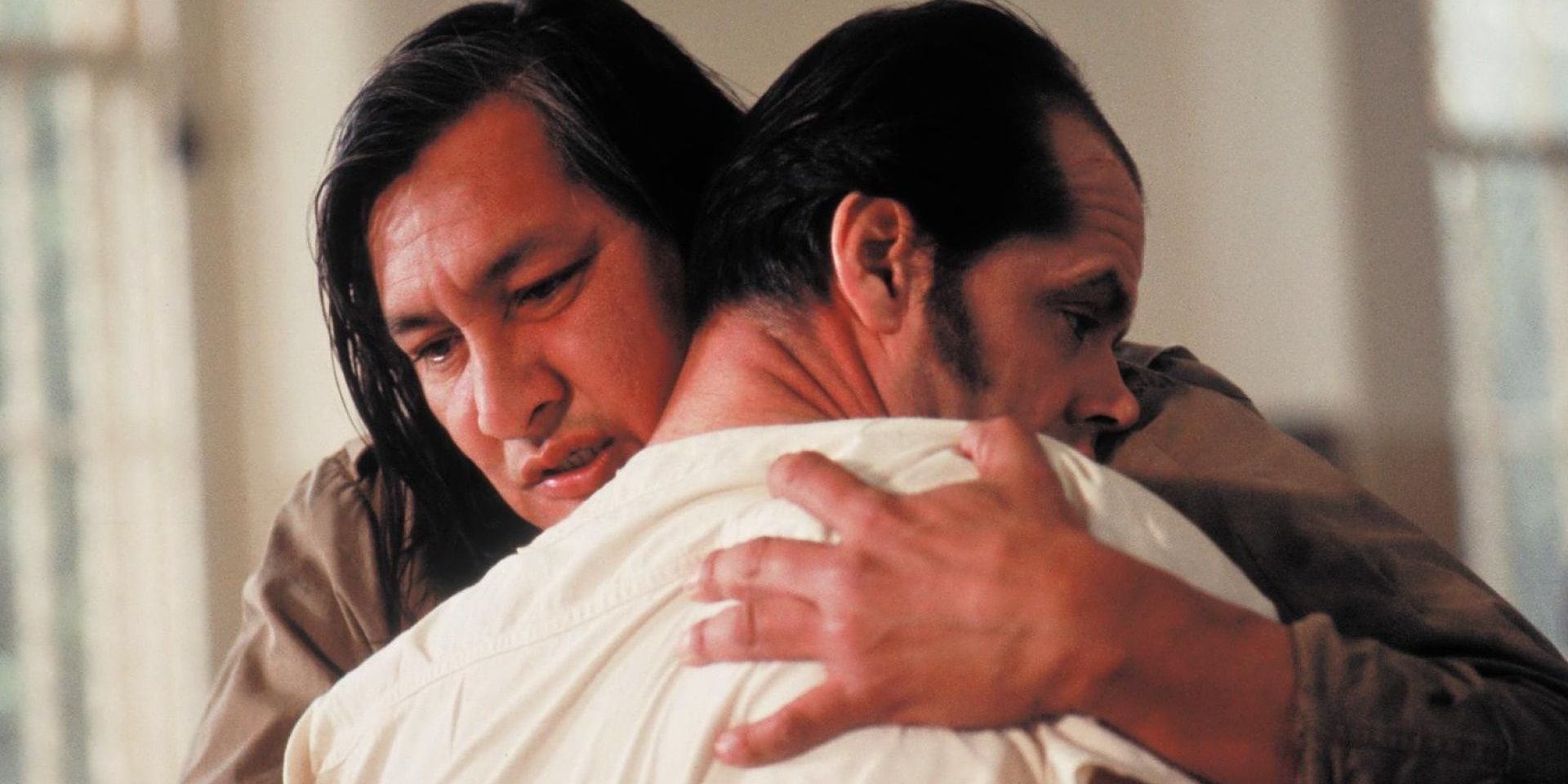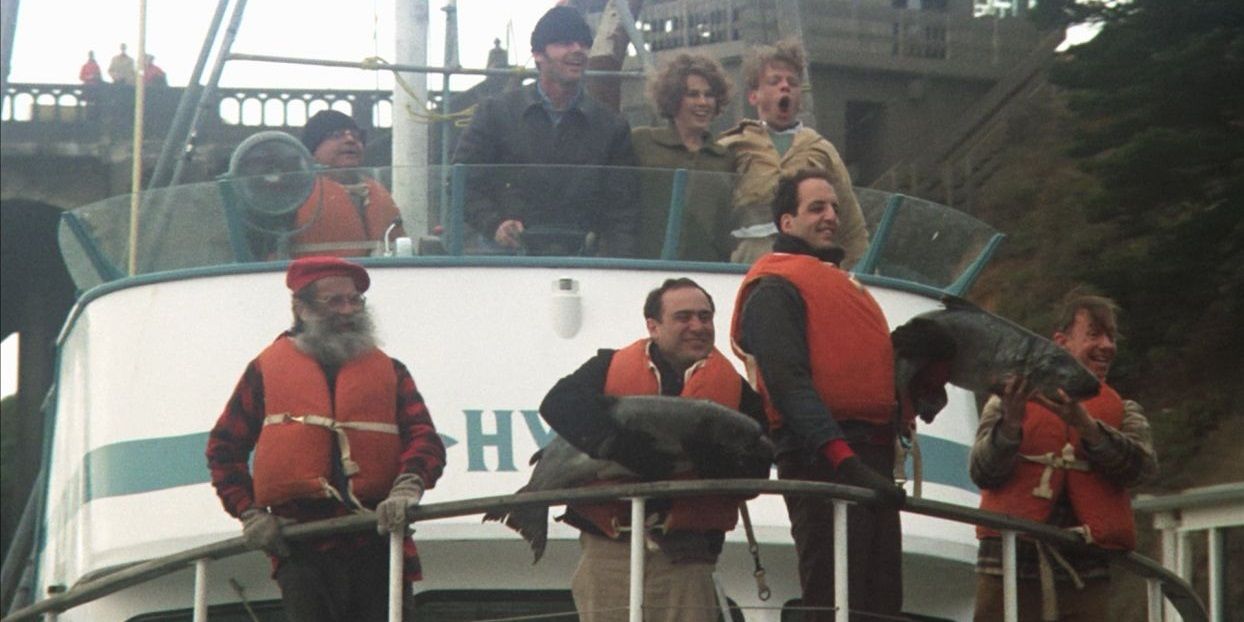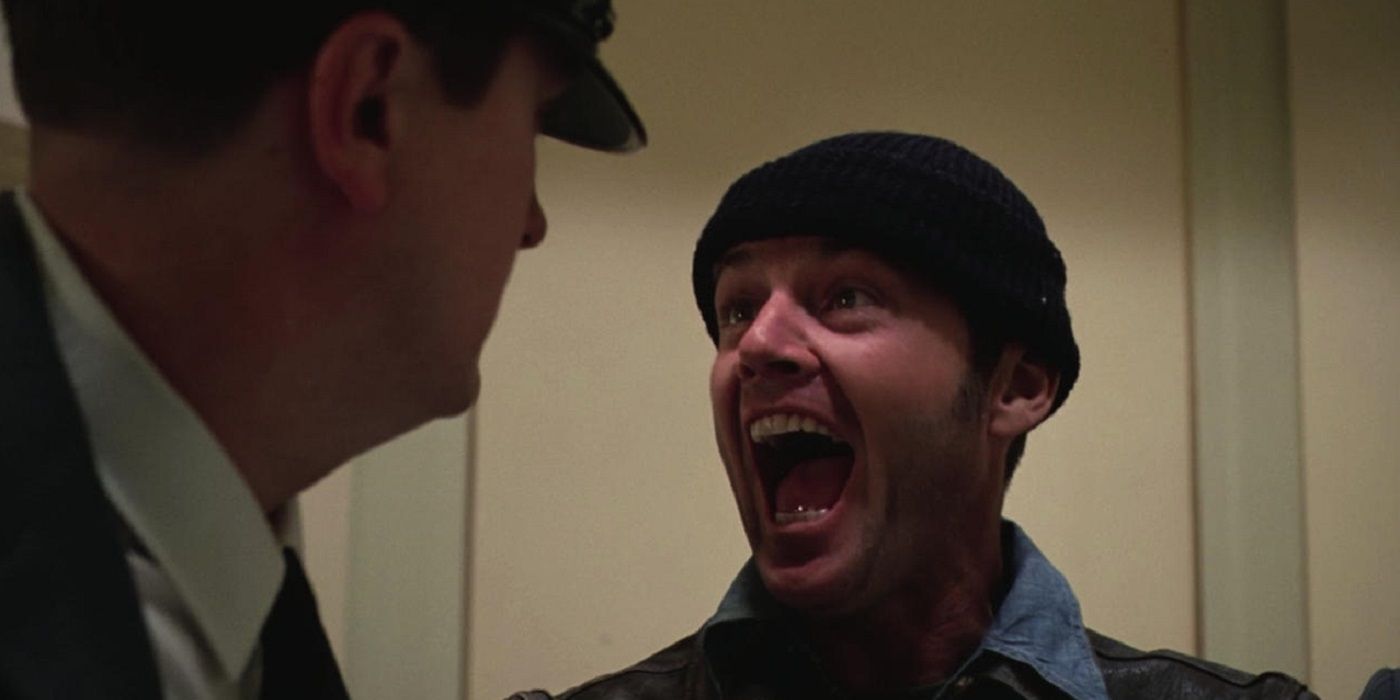Ken Kesey's classic 1962 novel One Flew Over the Cuckoo's Nest was adapted into a classic film, directed by Milos Forman, in 1975 and naturally, as with all book-to-film adaptations, the questions of fidelity and success inevitably arose. It's not a new consideration; after all, the same probing line occurs every time a new Stephen King screen adaptation is raised and indeed, Jack Nicholson's turn in The Shining inspires heavy debate on that front. Naturally, only one version can be better than the other and the question persists even now.
The general story centers on patients living in an Oregon psychiatric hospital for men, under the corrupt authority of the infamous antagonist Nurse Ratched. Kesey's original intent in creating the story was to offer a blunt study of the institutional process and to critique how psychiatric patients were treated at institutions in the 1960s. Before Forman directed the 1975 film version - which was adapted by Bo Goldman - the book was made into a Broadway play by Dale Wasserman in 1963. The novel is prominent on high school reading lists - though over the years it has been banned from some due to its crudeness and descriptions of violence - and Time magazine included it in its "100 Best English-language Novels from 1923-2005" list.
The movie version of One Flew Over the Cuckoo's Nest was a critical hit, and it's often referred to as one of the greatest films ever made. It was nominated for numerous accolades, including nine Academy Awards, and won five of them: Best Picture, Best Director, Best Actor (Jack Nicholson), Best Actress (Louise Fletcher), and Best Screenplay Adapted from Other Material. Jack Nicholson and Louise Fletcher were indeed lauded for their respective performances as patient Randle Patrick McMurphy and Nurse Mildred Ratched. But did the rest of the movie version outshine the novel?
McMurphy: Book Version vs. Movie Version
Despite the movie's overall loyalty to Ken Kesey's original story, especially in terms of maintaining its significant themes and motifs, it did deviate from the book in several ways. For example, it softened Randle Patrick McMurphy's more controversial behavior that is present in the book. In the book, McMurphy often resorts to violence to get his way, while in the movie Jack Nicholson's version is portrayed as a humorous con man. In the book, McMurphy wrongly cons his fellow patients into giving him their money, while the film only shows him winning cigarettes.
Also in the book, Kesey describes that among McMurphy's crimes was having sexual relations with a nine-year-old-girl. In the movie, though, McMurphy boasts about being conned into statutory rape by a 15-year-old girl, who apparently told him she was 18. Overall, the book reveals more disturbing truths about McMurphy - truths that often turn the read against him - while the movie portrays him as more fun-loving, and offers excuses for his behavior.
McMurphy eventually conforming to Ratched's rules is also something that's not seen in the film. In the movie, Jack Nicholson's McMurphy is roguish and rebellious up until his lobotomy. In the book, though, he spends time towards the end attempting to conform to the rules, becoming increasingly depressed and worn down as he does so.
Chief: Book Version vs. Movie Version
The most significant way the movie strayed from the film is through the story's point of view. In the book, Chief Bromden is the narrator who watches the struggle between McMurphy and Nurse Ratched. Readers observe Chief as he undergoes changes and details the events occurring the institution. The book also offers details on Chief's backstory, revealing that he is a paranoid schizophrenic and a war veteran whose white mother conspired with the government to emasculate his Native American father.
The movie, meanwhile, doesn't use Chief - played by Will Sampson - as the story's narrator. In fact, it fully discards his background story, instead giving McMurphy a more detailed backstory. In the movie, Chief is relegated to a supporting character, and his main purpose is to help McMurphy. Also, in the movie, Chief never ends up becoming fully communicative as he does in the book. And while in the book Chief ends up being the ultimate hero of the novel, McMurphy is the clear savior of the movie adaptation of One Flew Over The Cuckoo's Nest.
At the end of the movie, Chief is shown running from the hospital, with viewers assuming he will freedom and happiness. In the book, though, Kesey uses symbolism to give a darker meaning to the ending. Chief watches a dog sniffing gopher holes from a window; the dog is distracted by flying geese and chases them toward a road. It's implied that the dog will inevitably get hit by a vehicle and die. In this description, Kesey is trying to say that machines always triumph over nature, and is suggesting that when Chief escapes the hospital he may face a worse fate.
Some Details The Movie Forgot
The 1975 movie also left out some small details that were present in the original 1963 text. One of the most notable things the film left out was Charlie Cheswick's suicide. In the book, when he notices that McMurphy has started conforming to Ratched's rules, he feels betrayed and loses faith - and decides to drown himself.
The fishing trip, a famous scene in both the book and the movie, was also altered for the film version. In the novel, the trip is a planned group event, which Nurse Ratched repeatedly tries to cancel. But McMurphy ends up convincing a doctor to provide his car, so the trip happens and the patients have fun. In the film version, though, the fishing trip is much more dramatic. McMurphy ends up hijacking an institutional bus and leads his fellow patients in rebellion. But, of course, the scene is exciting and has become one of the most famous moments in cinematic history.
Why The Book Is The Better Version
Ken Kesey's 1962 novel is arguably the best version of One Flew Over the Cuckoo's Nest, trumping the critically acclaimed 1975 film adaptation. While there is certainly ample evidence to back up the movie's credit - including the phenomenal cast of the likes of Nicholson, Danny Devito, and Christopher Lambert that brought Kesey's characters to vivid life - it ultimately does not end up telling the same story that Kesey told.
The movie did keep several themes and motifs from the book, key among them freedom vs. institutionalization and rebellion against authority. But in deciding to dial down the character of Chief and turning McMurphy into the hero, the movie took away from the points Kesey was trying to make in the original story. And, ultimately, the movie white-washed the story by changing the point of view, taking away Chief's backstory, and focusing first and foremost on McMurphy's character arc.
Famously, Kesey claimed he never saw the film adaptation of One Flew Over the Cuckoo's Nest, due to arguments he had with its producers over pay. Supposedly, Kesey despised that the movie was not narrated by Chief Bromden, and he ultimately thought Jack Nicholson was the wrong actor to play McMurphy. Still, the movie went on to win multiple Oscars, and Jack Nicholson's portrayal of McMurphy has gone down as one of the greatest performances in cinematic history.

